If We Built It Today – Code of the Parthenon
In April 2021, the Science Channel released an intriguing new documentary in their “If We Built It Today” series. In Episode 3 of Season 2, the “Code of the Parthenon” explores the wonders and mysteries of the Parthenon of ancient Greece, and contemplates what it would take to build it today. The show features experts in architecture, engineering, history, sculpture and more. For insights into the beauty, aesthetics and design of the Parthenon, show producer Andrew Killawee turned to Gary Meisner as his Golden Ratio expert. Gary is, of course, the founder of this site at GoldenNumber.net, developer of PhiMatrix Golden Ratio Design and Analysis software and author of “The Golden Ratio – The Divine Beauty of Mathematics.”
Gary knows from past experience that you never know what parts of a one or two hour interview are going to end up as the few quotes or sound bites that make it to the final cut of an article or documentary. This documentary though far exceeded his expectations. The very first minute of the episode featured closeups of him, his Golden Ratio book and his PhiMatrix software in action. Marketing giants like Proctor & Gamble or Coca-Cola couldn’t have paid for better product placement and promotion!
Gary Meisner’s perspectives on the Golden Ratio
Highlights of Gary’s contribution to the documentary (appearing at about the 1, 6, 8, 12 and 22 minute markers of the Internet version) included:
- Providing explanations of the fundamental concepts and history of the Golden Ratio.
- Describing how the Golden Ratio is used as a tool for beauty and aesthetics in design.
- Explaining how our attraction to the Golden Ratio is “fundamentally human,” as it appears within the proportions of our own face and body, and even the spirals of our DNA.
- Illustrating how his PhiMatrix software can be used to provide evidence of the application of the Golden Ratio by the ancient Greeks in their design of the front face and floor plan of the Parthenon.
The entire hour long episode is fascinating on many levels, and very worth watching. For those without the time or access, a recap of the segments featuring Gary’s contributions to the documentary are shown below in the two “Selected Transcript” sections.
What’s a classic Greek story without an Antagonist?
The documentary though wasn’t all smooth sailing for Gary. The Golden Ratio is clouded with misinformation and confusion everywhere it goes. Conflict and controversy sell, and the show’s writers didn’t miss the opportunity in this classic Greek story to infuse the drama of the battle between a protagonist and antagonist. Pitted against the Gary’s quotes in support of the ancient Greek’s use of the Golden Ratio were quotes from his antagonist, Emily Varto, an Ancient Greece Historian.
Emily countered “This is an idea that the Parthenon is so beautiful and pleasing to the human eye, that it must follow one of these universal principals and beauty and proportion. Well it doesn’t have to follow a universal standard of beauty to be a thing of beauty. So I think there is a secret in the ratios, just that it’s a different ratio. If you pay attention to the measurements, which the archeologists have done within the last twenty or so years, and beyond, you’ll notice that proportion is 4 to 9, or 9 to 4. Of course, they’re interested in proportions. They just don’t seem to be that interested in the ‘so-called’ Golden Ratio.”
The scene then shifts to an illustration of the Parthenon’s length and width, with a big 4/9 to show their ratio. This is quickly followed by an animation of the Parthenon exploding into pieces to deliver the seemingly devastating blow that 9 to 4, or 2.25, is nowhere near the Golden Ratio of 1.618…!
This sounds quite condemning, but there was a fatal flaw in the antagonist’s evidence and reasoning. The ONLY proportion referenced to support her conclusion was that of the Parthenon’s length (228.14′ or 69.54 meters) to its width (101.34′ or 30.89 meters). This has a ratio of 2.2512, or about 9:4. The problem is that NO real expert on this topic has EVER claimed a Golden Ratio to exist in the ratio of the Parthenon’s length to width. To see the Parthenon’s Golden Ratios, you have to walk around the corner to the front face of the building, and look upward to see all of its beautifully designed detail. A trip inside reveals more yet. The attack was just an misinformed strawman argument, which is all too common among golden ratio skeptics, critics and debunkers.
In fairness, Emily is a very credible ancient Greece historian who added some wonderful historical content and color commentary to the documentary. Gary though has been investigating the Golden Ratio for many years, even writing his own software to do original research. And it’s a safe bet that the documentary, as good as it is, didn’t come close to capturing all that either of them had to say on this topic. Emily may well have been an unwitting victim of the surprising misinformation on the golden ratio that has been publicized by seemingly reputable sources. There truly is a general lack of good, consistent, accurate information that is available, even to those who really try to learn about the Golden Ratio.
And while Gary would completely agree with Emily that art and architecture certainly do not have HAVE to follow a universal standard of beauty to BE a thing of beauty, this entirely misses the point. The question at hand isn’t whether the Greeks HAD to use the Golden Ratio. The question is simply whether or not they DID.
The Parthenon’s Golden Ratios revealed
The documentary provided great exposure for Gary’s work and expert status, but didn’t even begin to dive into the depths of his writings and research that support his findings on the Greek’s use of the Golden Ratio in the design of the Parthenon. These are best presented in his article “The Golden Ratios of the Parthenon.” Some of the key golden ratios of the Parthenon are shown below. Note that a Golden Rectangle divided at its golden ratio point can be created with one of the most very basic geometric constructions of the golden ratio. This was shown by Euclid in “Elements” in a number of his propositions. The ancient Greeks embedded this Golden Rectangle FOURTEEN times across the face of the Parthenon, in the frieze section of the entablature resting atop the columns! An informed observer might conclude that they they thought it to be rather special and important, and didn’t want anyone to miss it!
Golden Ratios can then be found in many other design elements of the Parthenon, both on the exterior face as well as in its interior:
So then, in classic Greek drama fashion, the plot takes a turn for the protagonist as the narrator takes viewers to the story’s conclusion with quotes like these:
- “It’s clear for Gary AND the Greeks, beauty’s in the math.”
- So let’s do it. Let’s build the world’s most beautiful building according to the ancient principles of the Golden Ratio. (They cut once again to show “The Golden Ratio – The Divine Beauty of Mathematics” on Gary’s book shelf.) And that mission will guide every decision we make on our modern day Parthenon.”
- “To design it we’re going to need to bust out our calculators and do the math.”
- “Armed with the right ratios and optical refinements, we’re finally ready to settle on a design plan.”
- “We’re imagining how we’d build a modern day Parthenon. It’ll be built following the same proportions and golden ratios that defined this ancient icon.”
- “We did it. A modern shrine to democracy, freedom and beauty. We used the proportions and ratios of the ancient Greeks to reconstruct their greatest piece of architecture.
- And at the episode’s very end, “By rebuilding the Parthenon according to the Golden Ratio, we’ve revived a lost construction technique, and a pathway to beauty the world has sorely missed.”
Nashville – The Athens of the South
The fact that Gary lives in Nashville was an added bonus, as Nashville is the home to the world’s only full size replica of the Parthenon. This provided the Science Channel production team with great resources and footage, as well as interviews with other local experts, including Wesley Paine – Nashville Parthenon Museum Director, Betsy Robinson – Ancient Architecture Historian and Alan LeQuire – Sculptor, whose 24 foot sculpture of the Greek goddess Athena graces the interior chamber of Nashville’s Parthenon.

Wesley Paine Parthenon Museum Director 
Betsy Robinson Ancient Arch. Historian 
Parthenon Athena Sculptor Alan LeQuire 
Nashville Parthenon 
Nashville Parthenon Athena
Where to watch the show
The best place to watch “The Code of the Parthenon” is on The Science Channel itself, through your cable TV provider or other subscription resource. This 50 minute version is the most complete.
If you do not have access to The Science Channel from a cable TV subscription, you can also watch a slightly shorter 42 minute version on The Science Channel’s web site here:
https://www.sciencechannel.com/tv-shows/if-we-built-it-today/full-episodes/code-of-the-parthenon
You can also watch the Science Channel live without cable with one of the following options: fuboTV, Philo, Sling TV, or Hulu with Live TV.
“Code of the Parthenon” will be gradually distributed throughout the world in 2021 through 2023. International versions of the Science Channel currently exist in Southeast Asia, Europe, France, United Kingdom, Italy, India, Sweden, Turkey, Canada, Latin America and Australia. Unlike the U.S. network, the international channels are branded under the Discovery Science name.
For those without the access or time to watch, a recap of the segments featuring Gary’s contributions to the documentary are shown below in the two “Selected Transcript” sections.
Thoughts on the Parthenon’s lasting impact
Justin Shubow, President of the National Civic Arts Society, was another expert interviewed for the show. He expressed a very important point as to why the Parthenon and other buildings of this period are so important to architecture. Buildings throughout the world have been inspired by the architecture of ancient Greece. In Washington DC alone, these include the Supreme Court Building, the Lincoln Memorial, The Jefferson Memorial, The National Gallery of Art. He noted that these buildings all look like they’ve been there forever. They’re not a matter of fashion. These classic styles have been used whenever the architecture needs to present this sense of timeless, classic strength.
Sculptor Alan LeQuire was quoted with this insight at the show’s conclusion: “There is something there that’s ageless, and that is their sense of beauty. I think that most people who see the building get that immediately. We’re not using beauty as a guide, but if we did I think it would have a beneficial effect on everyone. Beauty, it makes your live much better on lots of levels.” The narrator concludes the episode with, “By rebuilding the Parthenon according to the Golden Ratio, we’ve revived a lost construction technique, and a pathway to beauty the world has sorely missed.”
With a spoiler alert, the show proposes to build this new version of the Parthenon in Washington, DC, with a focus of honoring the democracy of the United States of America and those who made it great. To match the original Parthenon’s 15 year construction period, they estimated that its cost would be $161,000,000. With just a small budget overage, I think the team could easily get the final cost to come in at $161,803,398.87, in near perfect homage to the golden ratio of 1.6180339887… !
I’d like to thank Andrew Killawee for the opportunity to be his Golden Ratio expert for this documentary. I’ve long studied and admired the Parthenon, both through the work of others as well as through my own original research. It was great to be able to share just a small part of what I’ve learned in this great documentary. I hope my participation along with all those involved in its production, will inspire others to learn more about it, and the role of the Golden Ratio in beauty, design and life itself.
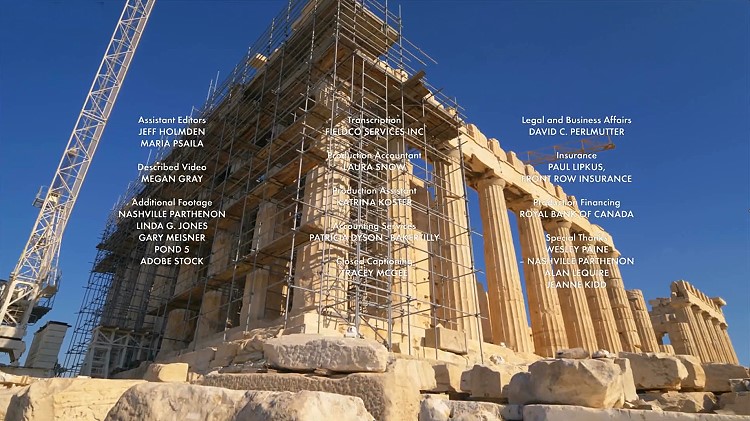
For more information on my work on the Parthenon, see my articles here:
- “Phi and the Golden Section in Architecture,” published on this site in 2003, as recorded on Archive.org.
- “The Parthenon and Phi, the Golden Ratio,” published on this site in 2013.
- “Dr. George Markowsky’s “Misconceptions about the Golden Ratio” Reviewed,” published on this site in 2016.
- “The Golden Ratio – The Divine Beauty of Mathematics,” published by The Quarto Group in 2018. See pages 104-108.
- “Donald Duck visits the Parthenon in ‘Mathmagic Land,” published on this site in 2020.
- “The Parthenon and the Golden Ratio: Myth or Misinformation?,” published on this site in 2020.
- The Golden Ratios of the Parthenon, published on this site in 2020.
“Code of the Parthenon” – Selected Transcript of 42 Minute Internet Version
- 0:23 PhiMatrix software overlaying the face of the Parthenon
- 0:25 Feature shot of The Golden Ratio – The Divine Beauty of Mathematics book, along with the golden mean gauges on Gary’s bookshelf
- 0:32-0:36 – Gary at computer analyzing Parthenon floor plan
- 1:08-1:15 – Gary in office saying, “The Golden Ratio appears many different places in the Parthenon. If understood, and if applied, it can be like a secret weapon.”
- 6:10-6:21 – Gary in office saying, “The Parthenon is said to be the most mathematically perfect building or temple ever constructed. The proportions that appear in it use many, many different numbers …”
- 8:07-8:11 – Gary at computer analyzing the Rose Window of Notre Dame
- 8:12 – Feature shot of collectible shelf on Gary’s bookshelf, feature Vitruvian Man and other items.
- 8:13 – Feature shot of The Golden Ratio – The Divine Beauty of Mathematics book and golden mean gauges on Gary’s bookshelf
- 12:05 – Narrator saying, “For most of us, beauty really is in the eye of the beholder, but for guys like Gary it’s all in math.” Gary Meisner is a writer and software developer obsessed with the Golden Ratio, or Phi, an ancient Greek formula discovered by Euclid, the forefather of geometry,” with feature shots of Gary working at his computer, Gary’s Golden Ratio book and bookshelf collectibles.
- 12:30-13:08 – Gary saying, “Euclid defined the Golden Ratio as follows: A line is said to be cut in extreme and mean ratio when the length of the entire line to the larger segment is the same as the larger segment to the small segment. That’s a lot of words, but it’s really not that complicated. It’s just a matter of dividing a line at the one unique point where the ratios are all consistent. There are certain elements of design that use position and proportion, and when the golden ratio is used in those cases you end up with kind of a foolproof way of achieving beauty in aesthetics.”
- 13:16-13:17 – Feature shot of The Golden Ratio – The Divine Beauty of Mathematics book and golden mean gauges on Gary’s bookshelf
- 22:02-22:20 – Narrator saying, “And while some contemporary architects believe the Golden Ratio has become less important over time, other experts like Gary Meisner think it’s the most useful framework for defining beauty. He’s even developed software based entirely on the concept.”
- 22:21-23:00 – Gary, at computer, saying, “What the software does is (provide) a transparent overlay that appears on the screen, and provides a set of grids that are in golden ratio proportion.” Showing an image of the Parthenon, “Here, I’ve applied a golden rectangle to the face of the Parthenon, going from where the roof line would be projected to be to the bottom of the second set of steps here. So this is a Golden Rectangle that frames the Parthenon, but in addition to that the Golden Ratio of the height defines the top of the columns.” Narrator saying, “It’s clear for Gary and the Greeks, beauty’s in the math.”
- 41:10-41:22 – Gary on screen at computer with Narrator saying, “By rebuilding the Parthenon according to the Golden Ratio, we’ve revived a lost construction technique, and a pathway to beauty the world has sorely missed.”
“Code of the Parthenon” – Selected Transcript of 50 Minute Cable TV Version
- 0:37 – Feature shot of collectible shelf of Gary’s bookcase, featuring Parthenon, PHI 1618 license plate, shell and more.
- 0:38 – Feature shot of collectible shelf of Gary’s bookcase, featuring Vitruvian man and Eiffel Tower.
- 0:39-0:40 – PhiMatrix software overlaying the face of the Parthenon
- 0:41 – Profile of Gary working at computer
- 0:43 – Feature shot of The Golden Ratio – The Divine Beauty of Mathematics book, along with the golden mean gauges on Gary’s bookshelf
- 0:46 – Gary in office saying, “The Golden Ratio appears many different places in the Parthenon. I truly think this was done by intent by the designers.
- 1:03-1:10 – Narrator saying, with Gary analyzing Leonardo’s “John the Baptist” on the computer, “Could an ancient mathematical formula help us design and build the most beautiful building in the world?”
- 1:31-1:37 – Gary saying, “So the golden ratio, if understood, and if applied can kind of be like a secret weapon.”
- 6:34-6:45 – Narrator saying, with profile of Gary and then PhiMatrix overlay on Parthenon and his Golden Ratio book, and bookshelf collectibles on screen, “But still today, brilliant minds wonder if we can use numbers and geometry to quantify beauty.”
- 6:47-6:55 – Gary saying, “The proportions that appear in it use many, many different numbers but among these you find the golden ratio repeated again and again.”
- 6:56-7:13 – Narrator saying, “Gary Meisner is a writer and software developer obsessed with the Golden Ratio, aka Phi, an ancient Greek formula discovered by Euclid, the forefather of geometry.”
- 7:14-7:57 Gary saying, “Euclid defined the Golden Ratio as follows: A line is said to be cut in extreme and mean ratio when the length of the entire line to the larger segment is the same as the larger segment to the small segment. That’s a lot of words, but it’s really not that complicated. It’s just a matter of dividing a line at the one unique point where the ratios are all consistent. The Golden Ratio has been in used in architecture, really across many centuries. We think it was used in the Great Pyramid of Giza. The Taj Mahal, built in the 600’s, has beautiful examples of the Golden Ratio. Notre Dame has the same patterns, in both the exterior of the building as well as in the rose window that shows Golden Ratios.”
- 8:59-9:11 – Narrator, with Gary on screen, saying, “So can we use the ancient Greek principles of mathematics and geometry to construct the most beautiful building in over 2,000 years?”
- 12:51- Narrator saying, “For most of us, beauty really is in the eye of the beholder, but for guys like Gary it’s all in math.”
- 13:00-13:14 – Gary saying, “There are certain elements of design that use position and proportion, and when the golden ratio is used in those cases you end up with kind of a foolproof way of achieving beauty in aesthetics.”
- 13:15-13:25 – Narrator saying, “So let’s do it. Let’s build the world’s most beautiful building according to the ancient principles of the Golden Ratio.” Cut to show “The Golden Ratio – The Divine Beauty of Mathematics” on Gary’s book shelf.
- 13:26-13:32 – Narrator saying, “And that mission will guide every decision we make on our modern day Parthenon.”
- 13:53-13:56 – Narrator saying, “To design it we’re going to need to bust out our calculators and do the math.”
- 13:57-13:44 – Gary in office saying, “The Parthenon is said to be the most mathematically perfect building or temple ever constructed.”
- 23:44-23:55 – Narrator saying, “But Gary Meisner still believes the Golden Ratio is central to the Parthenon’s design. He’s even developed a software based entirely on the Golden Ratio.”
- 23:56-24:58 – Gary, at computer, saying, “What the software does is (provide) a transparent overlay that appears on the screen, and provides a set of grids that are in golden ratio proportion. I’ve used my PhiMatrix software to get high resolution images of the Parthenon and to do that analysis for myself. And I’ve confirmed the presence of a number of golden ratios.” (Showing an image of the Parthenon) “Here, I’ve applied a golden rectangle to the face of the Parthenon, going from where the roof line would be projected to be to the bottom of the second set of steps here. So this is a Golden Rectangle that frames the Parthenon, but in addition to that the Golden Ratio of the height defines the top of the columns. The evidence becomes even more interesting and compelling if we look at the floor plan of the Parthenon. If we take a rectangle through all the centers of the columns, the golden ratio of that rectangle defines the dividing wall of the two inner chambers.”
- 24:59-25:09 – Narrator saying, “Gary believes there’s something fundamentally human about our attraction to this ancient Greek formula.” (Cut to the Golden Ratio Book on screen, then image of a human face.)
- 25:10-25:39 – Showing an x-ray image of a human hand, Gary saying. “Here we see that the length of each segment of your finger is also in roughly a Golden Ratio proportion. Showing an image of a human forearm, Gary saying, “This illustration shows that the length of your hand in relation to your forearm is also generally in Golden Ratio proportion. Showing an image of a DNA spiral helix, Gary saying, “Even the two spirals of our DNA are offset by positions based on the Golden Ratio.”
- 25:40-25:45 – Narrator saying, “It’s clear for Gary and the Greeks, beauty’s in the math.”
- 47:59-48:05 – Gary on screen at computer studying Leonardo’s “John the Baptist,” with Narrator saying, “By rebuilding the Parthenon according to the Golden Ratio, we’ve revived a lost construction technique, and a pathway to beauty the world has sorely missed.”

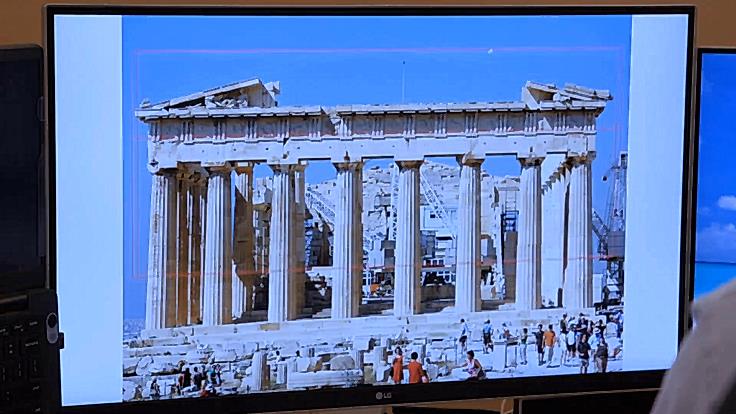
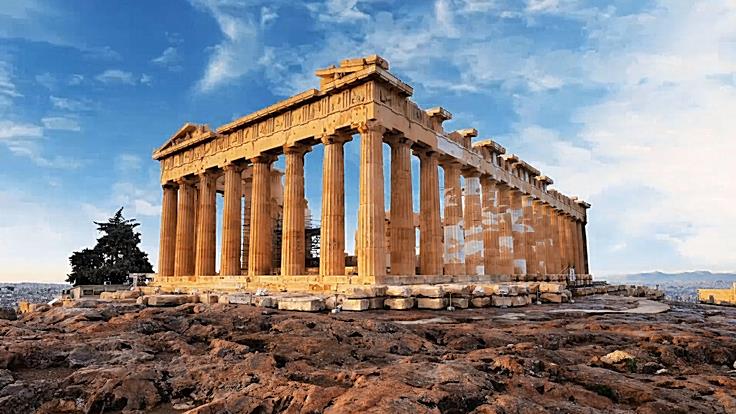
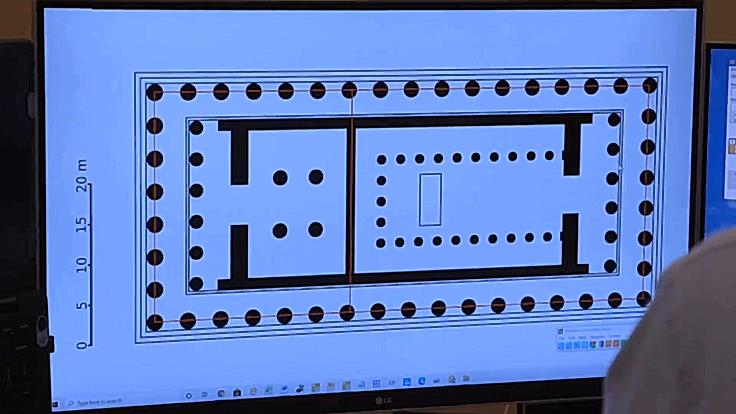
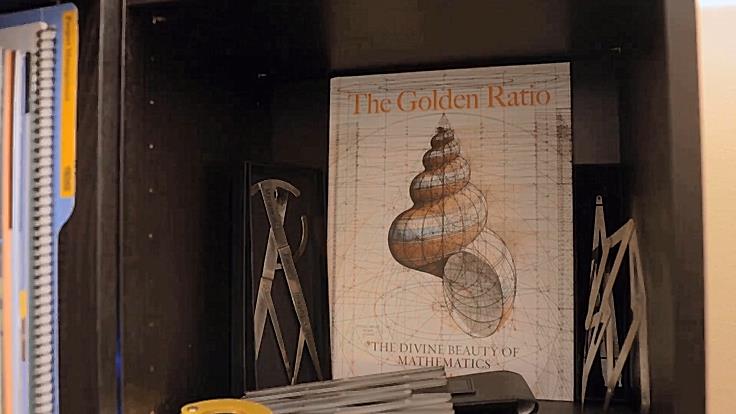
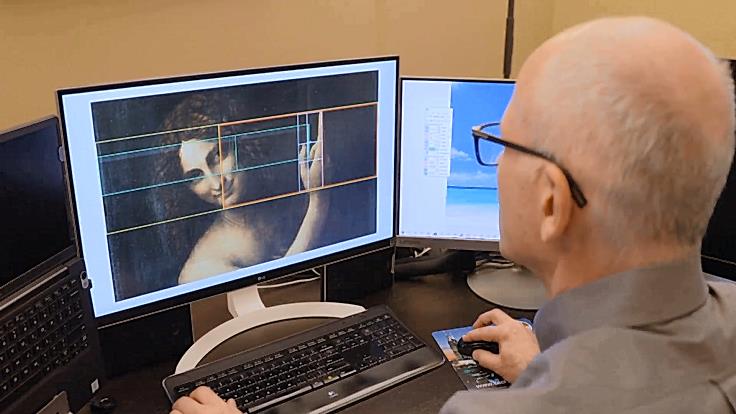
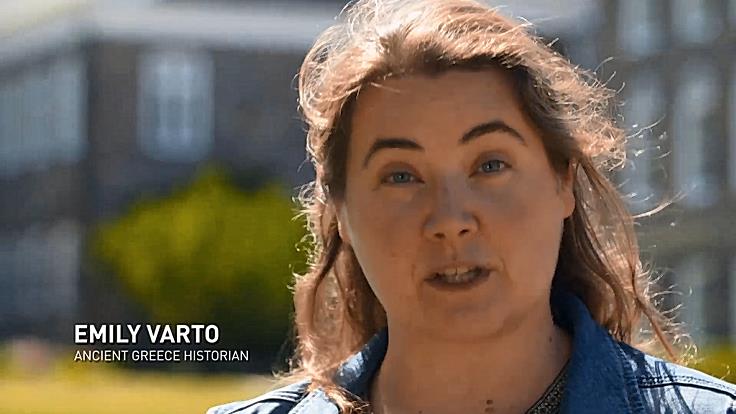
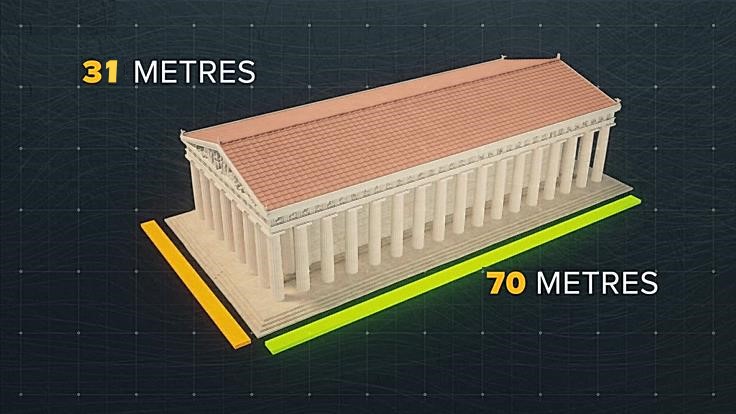
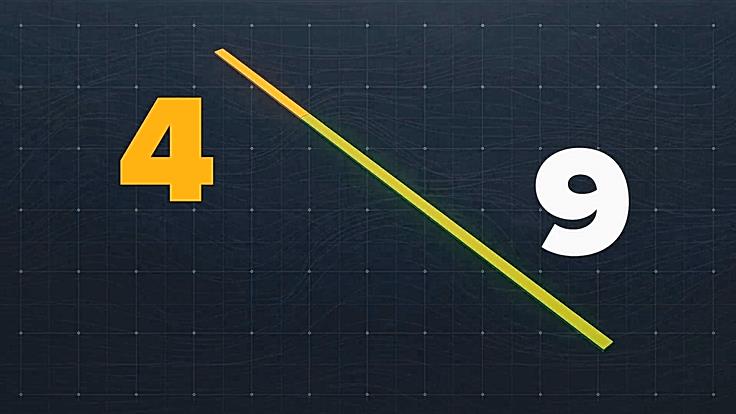
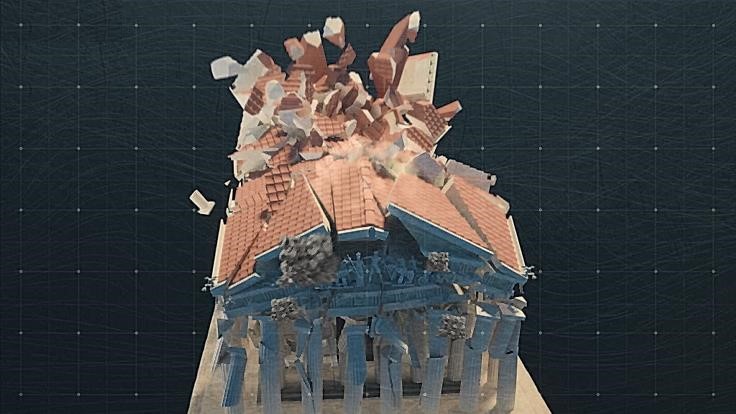
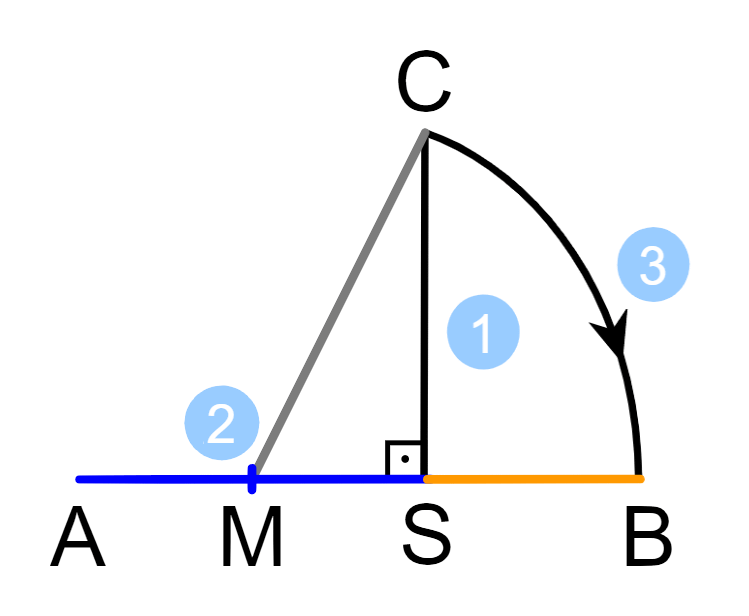
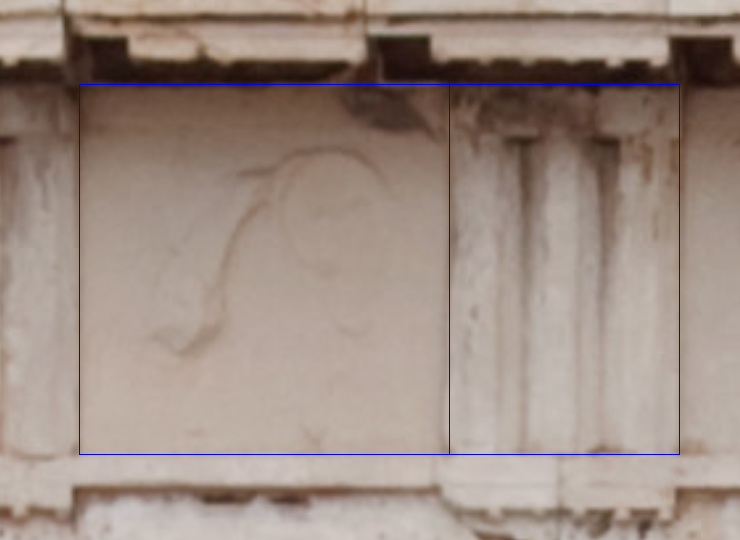

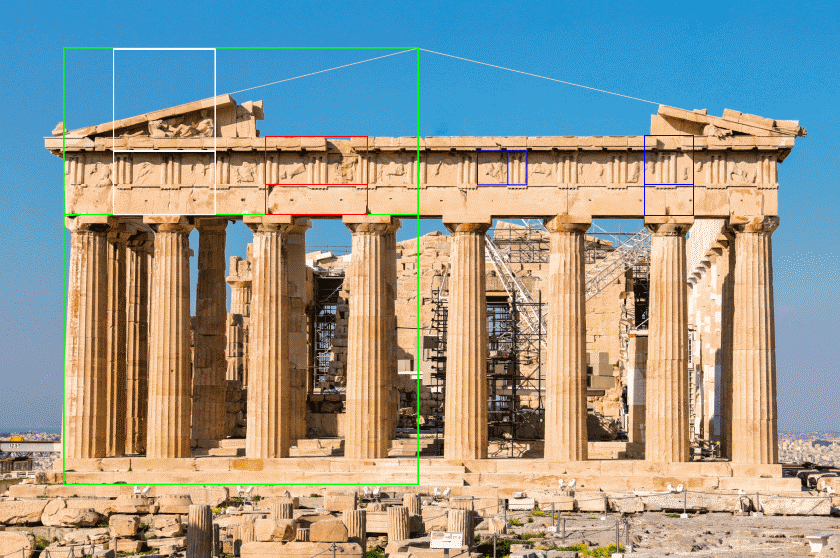
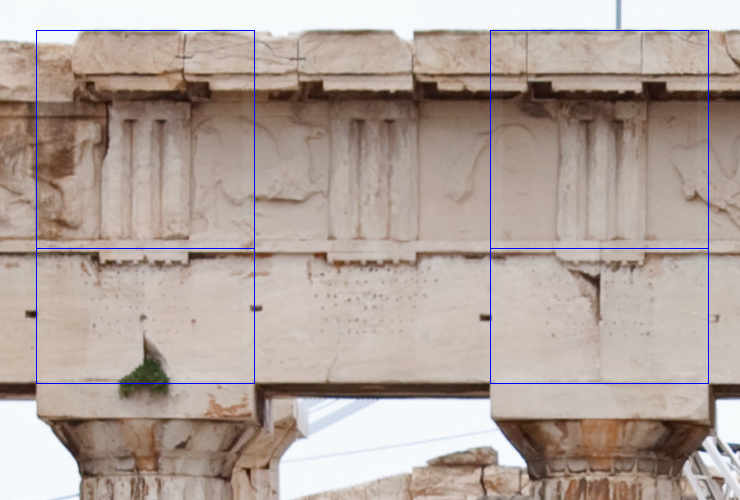
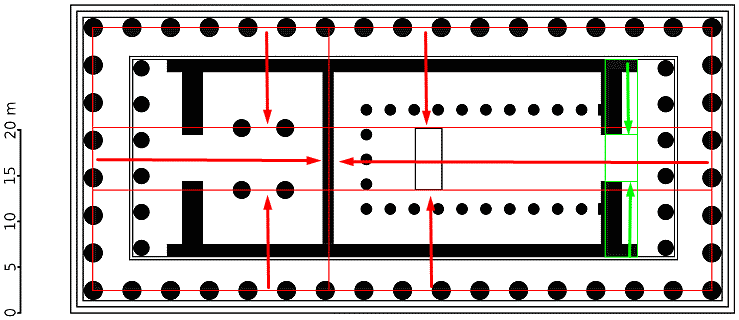
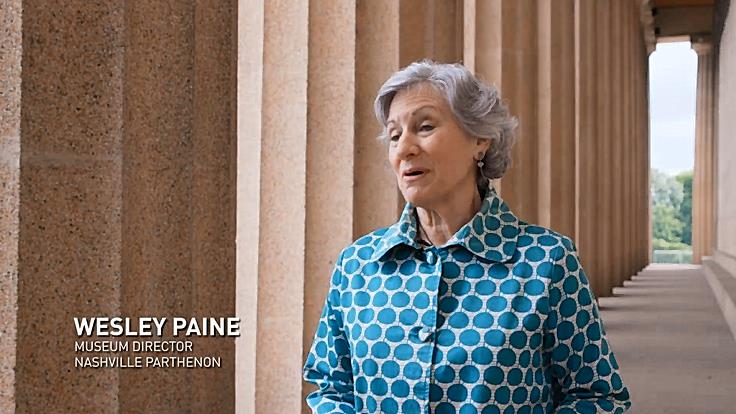
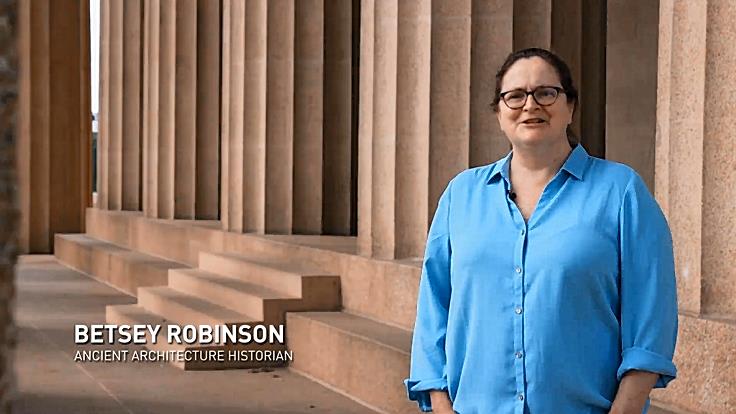
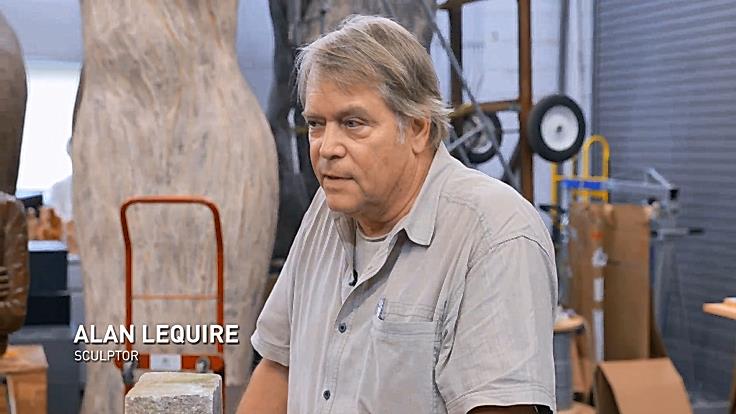
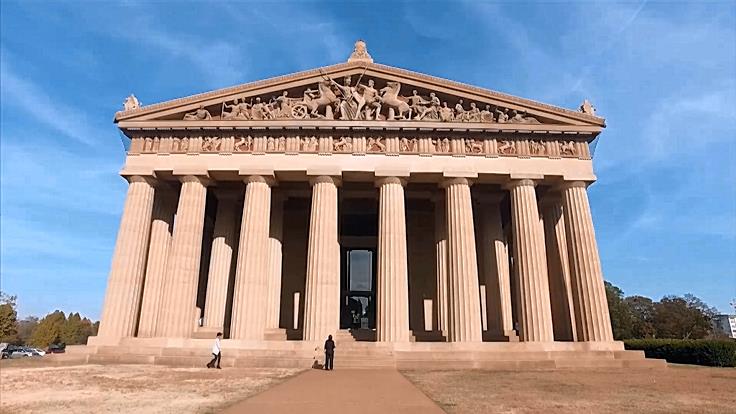
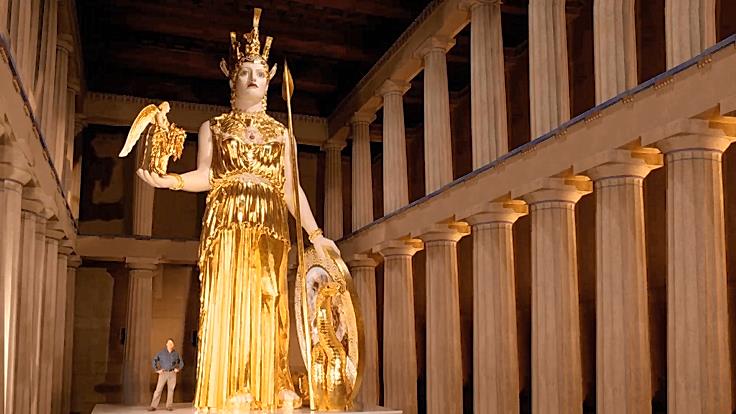
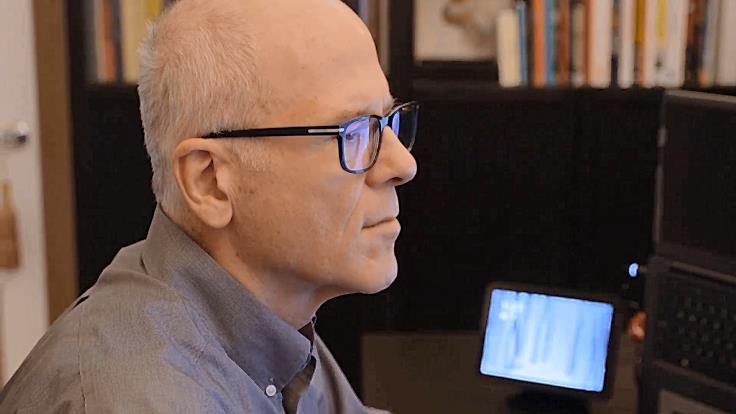
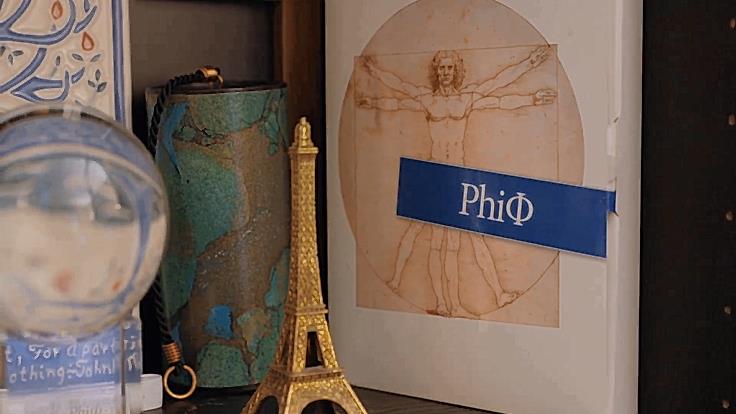
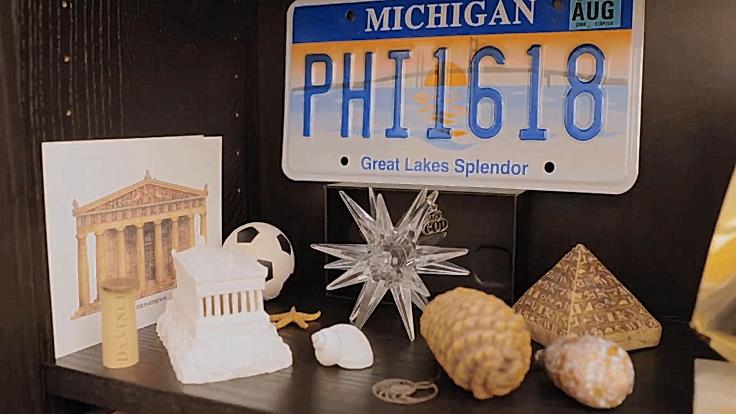
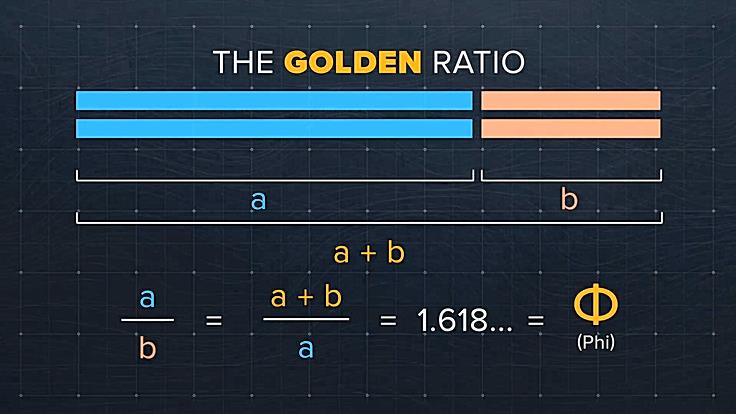
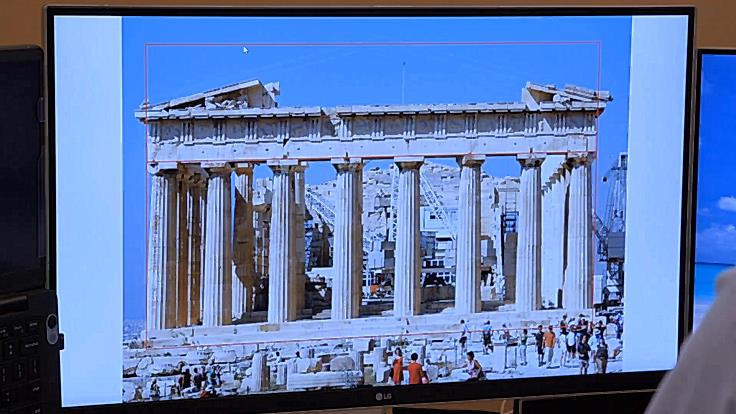
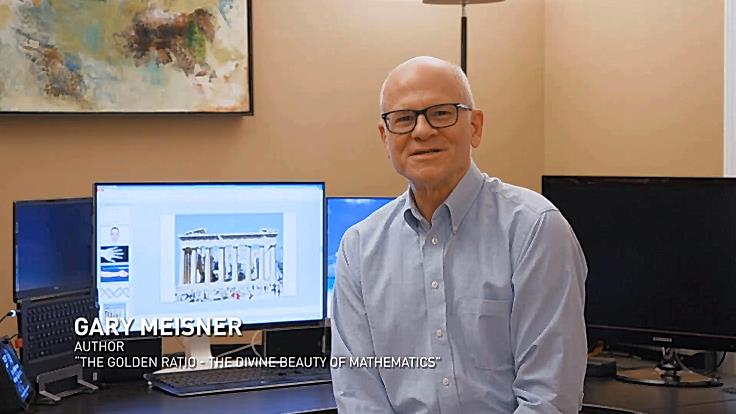

I started a branch of architecture, engineering and design called
” Proportals ”
I also started The Bespoke Architectural Guild to help research and advance the science.